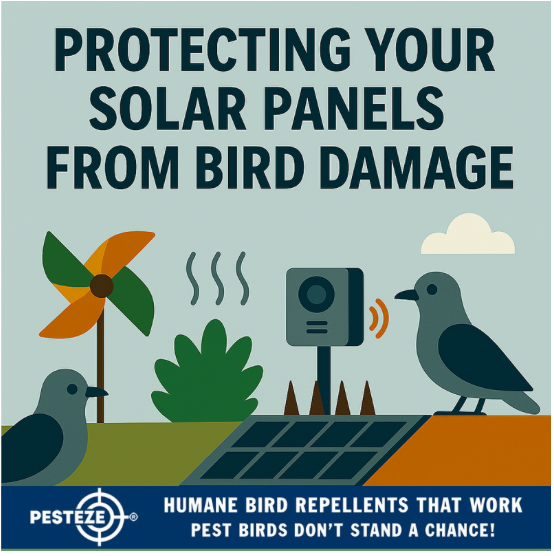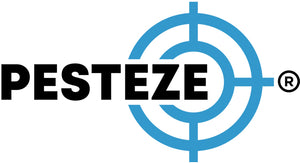PROTECTING YOUR SOLAR PANELS FROM BIRD DAMAGE

PROTECTING YOUR SOLAR PANELS FROM BIRD DAMAGE
SUMMARY
Solar panels create ideal nesting and roosting sites for birds, leading to reduced energy efficiency, expensive damage, and voided warranties. This specialized guide provides targeted solutions to protect your solar investment while maintaining optimal performance and preserving manufacturer coverage.
FEATURES
- Energy Efficiency Protection: Maintains peak solar panel performance by preventing debris accumulation and shading.
- Investment Security: Protects expensive solar equipment from physical damage and warranty violations.
- Specialized Installation: Professional-grade barriers designed specifically for solar panel configurations.
- Performance Monitoring: Strategies to detect bird-related efficiency losses before major damage occurs.
- Warranty Compliance: Methods that preserve manufacturer warranties while providing effective protection.
- Long-Term Maintenance: Sustainable approaches to ongoing solar panel bird control management.
GUIDE DESCRIPTION
Solar panels offer birds elevated perches, warm surfaces, and protected nesting spaces underneath arrays, but their presence creates serious threats to system efficiency and equipment longevity. Bird droppings reduce energy output by up to 25%, while nesting materials can cause overheating, electrical shorts, and fire hazards that void warranties and create safety risks.
Bird mesh systems provide the most effective protection for residential solar installations. Stainless steel mesh with UV-resistant coating installs around panel perimeters, preventing access to the space beneath arrays while maintaining proper ventilation. Professional installation ensures warranty compliance and proper attachment to mounting systems without compromising structural integrity.
Critter guards and panel clips offer targeted protection for specific vulnerable areas. Edge guards along panel perimeters block access points where birds typically enter, while wire mesh barriers can be customized to fit unique roof configurations. These solutions maintain roof warranties while providing effective bird exclusion.
Performance monitoring helps detect bird-related issues before they cause major damage. Regular energy output tracking can identify efficiency drops caused by droppings accumulation or nesting debris. Thermal imaging inspections reveal hot spots created by blocked airflow or damaged cells, allowing early intervention before costly repairs become necessary.
Cleaning and maintenance protocols must balance effectiveness with equipment protection and warranty requirements. Professional cleaning services experienced with solar installations can safely remove bird debris without damaging panels or voiding coverage. Regular inspection schedules during nesting season allow early detection of problems when solutions are least expensive.
Deterrent integration around solar installations requires careful consideration of electrical safety and equipment access. Bird spikes on mounting rails and inverter housings prevent perching without interfering with system operation, while reflective deterrents positioned strategically discourage roosting without creating maintenance access issues.
Ground-mount solar arrays face different challenges requiring specialized protection strategies. Perimeter fencing with appropriate mesh sizing prevents ground-dwelling birds from accessing equipment while maintaining proper ventilation. Predator decoys and motion-activated deterrents positioned around arrays can provide additional protection for larger installations.
Seasonal considerations are crucial for solar panel bird control. Spring installation of barriers prevents nesting establishment during peak breeding season, while fall maintenance prepares systems for winter weather and migrating bird populations. Storm damage assessments should include inspection of bird barriers and deterrent systems.
Professional assessment is recommended for most solar installations due to roof access challenges, electrical safety concerns, and warranty implications. Certified installers can evaluate specific site conditions and recommend appropriate protection methods that maintain system efficiency while providing effective bird control.
Cost-benefit analysis strongly favors proactive bird protection over reactive repairs. Barrier installation costsrepresent a small fraction of potential damage repair expenses, especially when considering lost energy production and warranty coverage issues. Insurance considerations may also favor properties with documented bird protection measures.
Remember that improper DIY installation of bird barriers can void solar panel warranties and create safety hazards. Professional installation and maintenance ensure optimal protection while preserving manufacturer coverage and system performance guarantees.
- Pukhraj Sharma


Comments 0